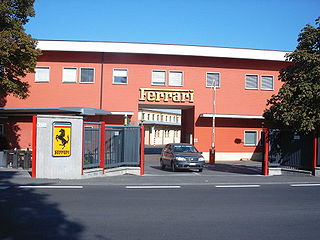This article needs additional citations for verification .(July 2011) (Learn how and when to remove this template message) |
This article has an unclear citation style.(September 2009) (Learn how and when to remove this template message) |
Community marketing is a strategy to engage an audience in an active, non-intrusive prospect and customer conversation. Whereas marketing communication strategies such as advertising, promotion, PR, and sales all focus on attaining customers, Community Marketing focuses on the perceived needs of existing customers. This accomplishes four things for a business:

Advertising is a marketing communication that employs an openly sponsored, non-personal message to promote or sell a product, service or idea. Sponsors of advertising are typically businesses wishing to promote their products or services. Advertising is differentiated from public relations in that an advertiser pays for and has control over the message. It differs from personal selling in that the message is non-personal, i.e., not directed to a particular individual. Advertising is communicated through various mass media, including traditional media such as newspapers, magazines, television, radio, outdoor advertising or direct mail; and new media such as search results, blogs, social media, websites or text messages. The actual presentation of the message in a medium is referred to as an advertisement, or "ad" or advert for short.
Public relations (PR) is the practice of managing the spread of information between an individual or an organization and the public. Public relations may include an organization or individual gaining exposure to their audiences using topics of public interest and news items that do not require direct payment. This differentiates it from advertising as a form of marketing communications. Public relations is the idea of creating coverage for clients for free, rather than marketing or advertising. But now advertising is also a part of greater PR Activities. An example of good public relations would be generating an article featuring a client, rather than paying for the client to be advertised next to the article. The aim of public relations is to inform the public, prospective customers, investors, partners, employees, and other stakeholders and ultimately persuade them to maintain a positive or favorable view about the organization, its leadership, products, or political decisions. Public relations professionals typically work for PR and marketing firms, businesses and companies, government, and public officials as PIOs and nongovernmental organizations, and nonprofit organizations. Jobs central to public relations include account coordinator, account executive, account supervisor, and media relations manager.
Contents
- Connects existing customers with prospects
- Connects prospects with each other
- Connects a company with customers/prospects to solidify loyalty
- Connects customers with customers to improve product adoption, satisfaction, etc.
Customer satisfaction is a term frequently used in marketing. It is a measure of how products and services supplied by a company meet or surpass customer expectation. Customer satisfaction is defined as "the number of customers, or percentage of total customers, whose reported experience with a firm, its products, or its services (ratings) exceeds specified satisfaction goals."
There are two types of community marketing:
- Organic or natural marketing occurs without the assistance of the company. Organic marketing is word-of-mouth marketing and is one of the most effective marketing methods
- Sponsored community marketing is promoted by company through activities like investments in the local community improvement initiatives or corporate social responsibility.
Corporate social responsibility is a type of international private business self-regulation. While once it was possible to describe CSR as an internal organisational policy or a corporate ethic strategy, that time has passed as various international laws have been developed and various organisations have used their authority to push it beyond individual or even industry-wide initiatives. While it has been considered a form of corporate self-regulation for some time, over the last decade or so it has moved considerably from voluntary decisions at the level of individual organisations, to mandatory schemes at regional, national and even transnational levels.
Skepticism among consumers as a result of blatant advertising and other unethical communications has affected the success of the sponsored form of Community Marketing. Continuing success in community marketing strategies has been found in engaging and cultivating the natural communities that form around their product/service.










